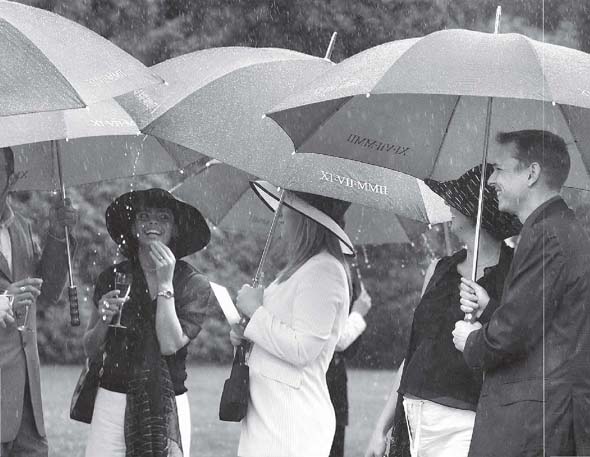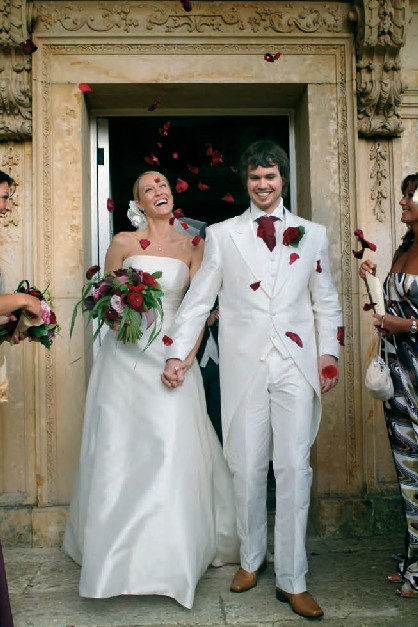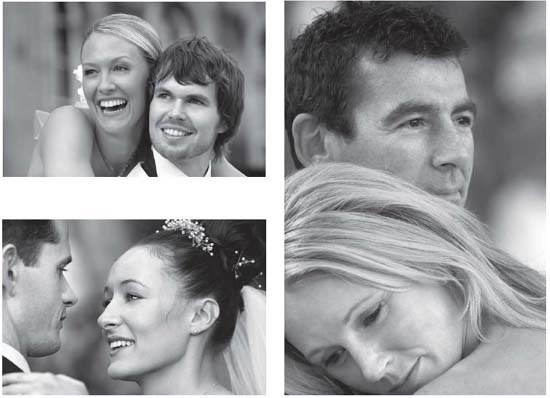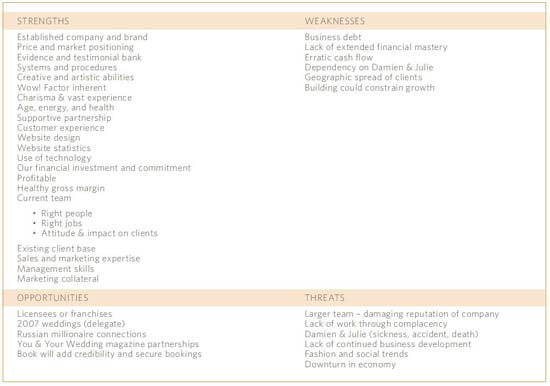In this chapter , I’m going to lay my cards on the table. I’m going to tell you our story – with as much honesty as possible – how we struggled at the beginning, what we did to overcome our inexperience, and how we plan to achieve our goals in life. Theory is all very well but ultimately what counts are the actual choices we make and the lessons we learn along the way.
What is it that attracts people to the world of professional wedding photography? Like me, they have often come from settled careers that have allowed them to explore photography as an enjoyable hobby. Then, as their skills increase, they start to dream. Could photography be a way out of the rat race – a chance to earn good money doing something they really enjoy? Wedding photography is in constant demand and is considered easy pickings. Sometimes redundancy is all the excuse neededfor a new professional photographer to emerge from the crisis. This is the first part of the journey.
Everyone has their own story but this is ours. It goes in four stages, taking us well into the future.
STAGE 1: TAKING THE PLUNGE
One day I came home from my secure job at the BBC and told Julie that I had handed in my notice. I can see now that it was selfish of me to plunge us both into chaos, but I really expected to make easy money as a photographer. I had a modicum of talent and I’m certainly no shirker. But – and this was a very big ‘but’ – I was totally unaware at that time how little I knew about business in general and especially about the business of photography.
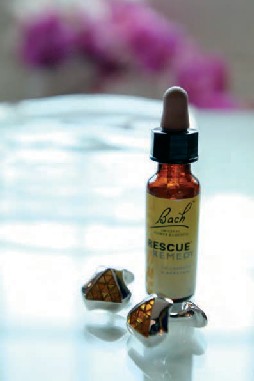
Fig. 2 ISO 800 f/3.4 at 1/180th
The cufflinks and the rescue remedy were on the grooms bedside table. I placed them on a glass coffee table to get this shot while he was in the shower. We all need help when the going gets tough

Fig. 3 ISO 1600 f/4 at 1/470th
This casual backlit shot of a champagne bucket set the mood in the album. Sometimes it pays not to interfere and tidy up a shot too much. The composition works well with the bucket resting on the left edge of the frame

Fig. 4 ISO 800 f/4.8 at 1/45th
The baby’s milk was a bit hot so into the ice bucket it went to cool down for a few seconds. It was there just long enough for Julie to capture this amusing picture
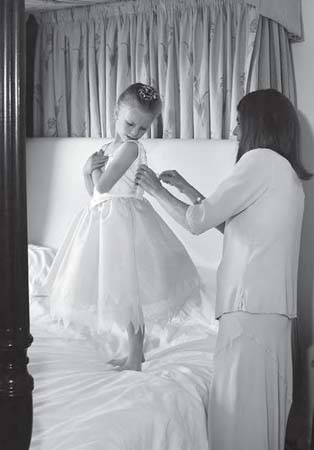
This beautiful picture captures a great experience for the little princess
We soon went deep into the red – £40,000 overdrawn – before I began to pull us into a profitable position. The turnaround came as a result of training. In fact, we invested £8000 of our bank’s money on business training. Did it work? Absolutely. It was like a light being switched on. From day one, I learnt something that I’d never really considered: that I was in retail. I also had guidance in the form of a mentor: Catherine Connor refocused my perspective, taught me about the customer experience, setting goals, and more, far more.
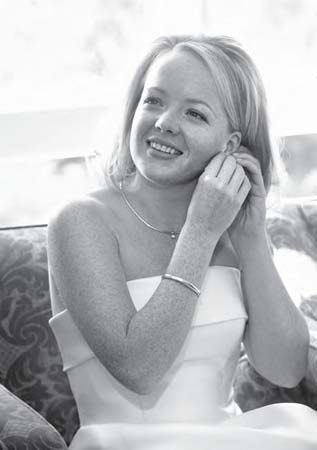
A splash of flash from a flashgun held above the camera gives this picture its clarity. Julie chose to increase the ambient exposure setting by one stop to keep the bright background light
STAGE 2: EXPANDING THE TEAM
Then came the next stage in the familiar path of a wedding photographer. Having learned to plan ahead, sort tasks, and manage personal time, it became obvious that we needed to expand our team. Taking on two full-time staff in year two saved me from the 2:00 am finish each night. This is a scenario that so many start-up business managers go through. With two new staff on the books, our fixed costs hit new highs and throughput of work had to rise dramatically to feed the beastour business had become. So we grew from 25 weddings per annum up to 40 weddings. Julie became a photographer in her own right, and had a meteoric rise through the ranks to the top echelons, much to the annoyance of some ‘old school’ fellows. Within a year she was ‘wedding photographer of the year’ and setting new standards. I was a lucky guy. Not only did I have a wonderful partner, I had one who really appreciated photography! A greater percentage of our workload was now spent taking pictures. Our staff handled the darkroom duties, ordering stock, gluing and sticking of the wedding albums, and most of the general office tasks.

Creating a rapport with the priest is a good idea to help the ceremony flow. I had been previously asked by the bride to take a picture of the priest on the wedding day. He was flattered and kindly obliged
STAGE 3: A DEDICATED WORKSPACE
We had to move. Having staff working in our home was not fun – we needed our own space – somewhere to think or cry! Clearly a dedicated workspace was required so that we could entertain clients and so that our staff could perform their duties in comfort and with pride. The simple things like having a dedicated production area for album construction is a must. Working on tasks like that on the kitchen table is not recommended, especially if you have children.
OK, so you’ve done it. You’ve become good at your job and built up the business. Additional staff now allows you to concentrate on the creative stuff. You’ve moved to premises that allow a dedicated workspace. Is it enough? The majority of social photographers seem to think so. They’ve got their name over the door and are considered successful. As the years go by, a succession of staff come and go until one day, retirement looms. But how many have managed to plan an income for the next 30 plus years in retirement?
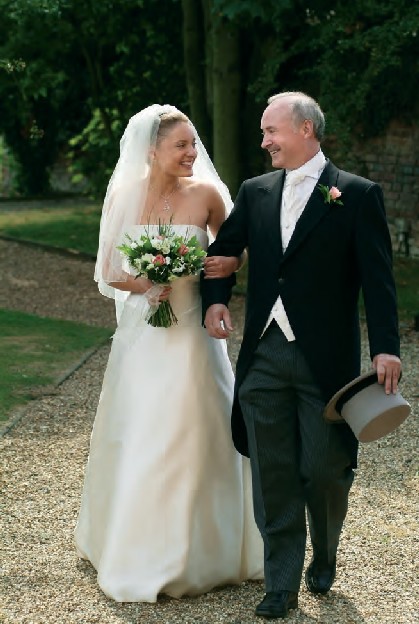
I knew this shot was going to happen and I was ready and prepared when it did
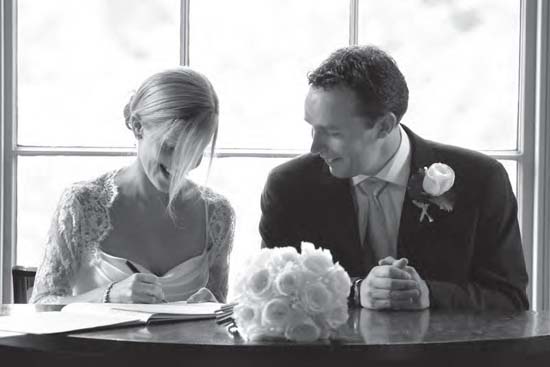
One stop of exposure compensation was needed to capture the delightful expressions on this couple’s faces
The truth is that for decades, rather than owning the business themselves, the business has owned them! It’s far too easy to think that you have arrived when your name is in lights above the door of your studio and your photography is in demand from your local community. But even with this level of success, taking extended holidays is expensive because if you’re not shooting, you’re not earning. Ill health is a big risk too and some sort of income protection insurance might be a wise purchase. At this stage in a career, if Stage 4 is to be reached, some forward thinking is needed.
STAGE 4: THE GOLDEN AGE
The lucky few photographers who used Stage 3 to plan an exit strategy, will build a business with real value. They will own the business and not be a slave to it. Stage 4 is the golden age. Imagine this, you have created the ultimate moneymaking machine; you have the right staff, including photographers you have trained, and a manager in place at your studio. You can let the business run itself!

Figs 10 & 11 ISO 400 f/4 at 1/1000th and 1/450th respectively
These two pictures illustrate very different approaches to photographing a similar situation. I set up the first picture by asking the guests to form two lines with their confetti. I walked backward as the couple came toward me. In the second picture, I chose to mingle in the crowd and shoot the moment in a reportage way. The guest point of view is an interesting one to shoot but beware of overdoing it. Out of focus backs of heads in the foreground of images are rarely attractive.
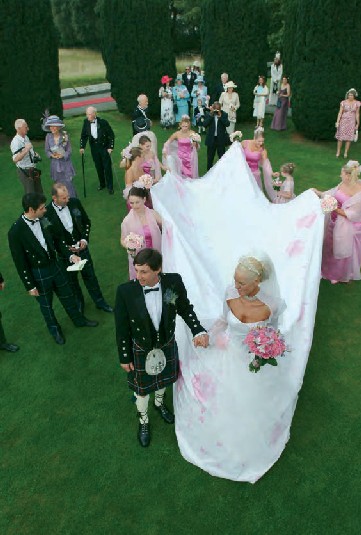
Fig. 12 ISO 200 f/4 at 1/360th
I used my camera on my monopod held way up high trick to get this picture of the bride’s dress. I used an air release to trigger the shutter

Fig. 13 ISO 400 f/9.5 at 1/125th
High viewpoint pictures like this are always in demand by our clients. This is a scene-setting picture that allows a series of milling pictures to follow in the album
At this point getting out becomes a real option. For example, you could pass the business on to a son or daughter to run while maintaining a directorship. This is a good way to secure an ongoing income well into retirement – assuming that your children are ready for the responsibility. Another option is to sell franchises or set up licensees. For this to work, you will need to have created an exceptional business with repeatable systems, a business model that can be easily duplicated. Another option is to sell the business. If your business has had three consecutive years of growth and will run without you, it has real value and someone will buy it. By now you will be aware that Stage 4 is all about options. These choices later in life are valuable, and if you start to plan your exit strategy now, you too can have options when you want out.
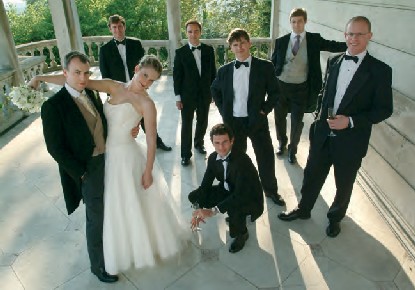
Fig. 14 ISO 800 f/9.5 at 1/360th
Some clients like creative intervention. I set each guy in their own place in turn and asked the bride to ‘drape.’ I held the camera above my head to get a slightly higher viewpoint. I took the picture and then immediately checked I hadn’t chopped any limbs off by accident
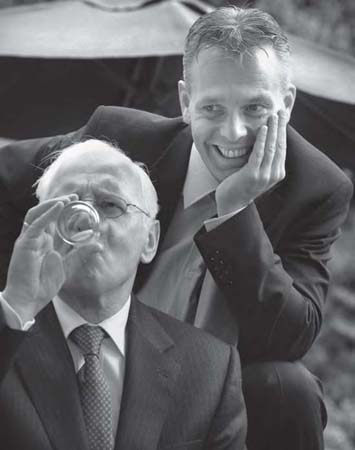
Fig. 15 ISO 800 f/4 at 1/725th
This picture of a dad and his son at the reception was one of those seen moments that needed a lightening reaction to capture

Fig. 16 ISO 400 f/4 at 1/210th
I saw these boys wander off and I had time to swap my lens to a 200 mm zoom to capture this lovely shot.

Fig. 17 ISO 200 f/4 at 1/250th
Sometimes the best way to show scale is to go for a jog with a telephoto lens and to shoot from a distance. I placed the couple against the dark steps to show off their white clothes. It’s a brave thing to have done but the picture is worth it.
But what about us? There we were, stuck in Stage 3 with a studio, staff, overheads, and a full diary of commitments. We were on the treadmill with no way off. What would happen if we became unable to shoot weddings? Did we own the business or did the business own us?
Clearly, it was time for some further training. We needed to become entrepreneurs, in charge of our own route and keeping the long-term in mind. After all, I wasn’t expecting to be shooting weddings in 25 years’ time. It was at this time that Gregory Haddock, better known as ‘The Profit Doctor,’ became our business coach and sounding board for all my whacky ideas.

Fig. 1 8 ISO 200 f/4 at 1/3000th
This is another figure in the landscape shot taken on a long lens to exclude the sky.
He guided us through the transition and toward Stage 4. For a multitude of personal and financial reasons, this was no easy task. He set out a simple strategy that Catherine Connor had begun 5 years before. Catherine was our mentor and coach from Years 2 to 4 and remains a good friend and source of inspiration to Julie and me to this day. Let me share their strategy with you.
PERSONAL GOALS
First, you’ll need to write out your personal goals. Do this at least annually because in life, priorities and circumstances areapt to change. So decide what you really want and write it down. The process can be very therapeutic. Take a look at our goals from early 2007:
-
Have more time at weekends for Francesca, our 10-year-old daughter.
-
Reach a financial comfort zone, without a mortgage and with a continued income by 50. (Have enough assets at work so that our lifestyle is affordable and work itself is optional.)
-
Have more family weekend breaks, and a better quality of leisure time.
-
Travel the world and have at least two great trips a year.
-
Have a long-term offshore base for 3 months of the year in 8 years’ time.
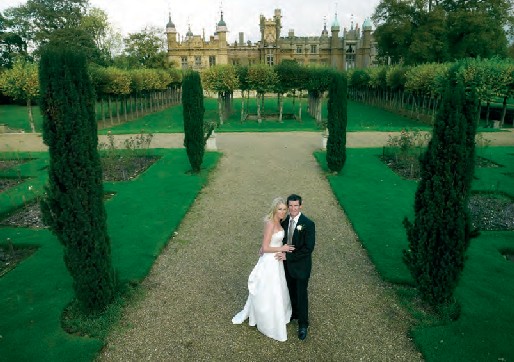
Fig. 19 ISO 400 f/9 at 1/200th
To get Knebworth house in the background I had to hoist my camera above my head on the monopod and guess the framing. By exposure three I had it spot on. This process relies on trial and error using the image on the back of the camera as the feedback.

Fig. 20 ISO 100 f/4 at 1/500th
I used a low viewpoint for this beautiful bridal portrait. The Queens gate to St James Park in London made an ideal setting and contre-jour sunlight did the rest.
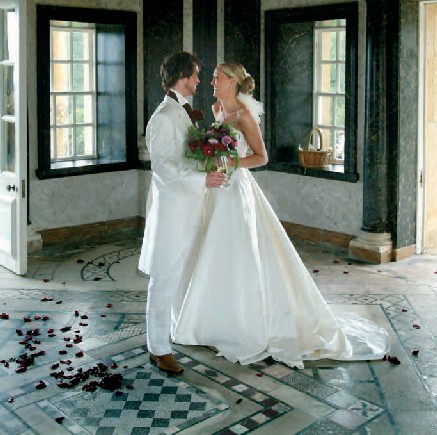
The couple’s position is critical in this picture. They are symmetrically set against the dark panels and rim lit from two sides. The bride’s wonderful expression makes this picture sing.
This seems quite a simple list and most of the items are obvious. Writing them down helped polarize our thoughts and gave us a horizon to aim for. When we reach that point there will be another horizon in front of us with a new set of goals that may include grandchildren for instance.
BUSINESS GOALS
The next task is to set out your business goals. Business goals are designed to deliver the necessary resources to meet personal goals. Here are the business goals I set out in January 2007.
-
Improve cash flow and make more consistent profit in the portrait business.
-
Eliminate all remaining business debt in 2007 (studio build overspend –oops!).
-
Build the portrait business up to the planned four shoots a week level. Two baby or pregnancy shoots for Julie and two family or child shoots for me.
-
Double the size of the www.lovegroveconsulting.com arm of the business by running more workshops and training events.
-
Engage licensees to shoot weddings. This will free up most of our weekends for Francesca. It will enable us to reduce the number of weddings that Julie and I shoot personally while maintaining our brand position.
-
Finish the Wedding Book and start on the Portrait Book.
-
Offer our digital picture editing services to other photographers around the world.
-
Damien to become a freelance writer contributing articles to four magazines on a monthly basis. This will help to maintain our brand position and provide personal income to finance travel ambitions.
-
Julie to explore her opportunities to offer consultation services to one sector of the property market.

Fig. 22 ISO 800 f/4 at 1/1440th
I used a set of steps to offset the couple’s heights in this image. It was one of a series of four pictures taken on the steps. The love and fun evident in the picture does the rest.
This set of business goals shows diversification. On the other hand, it may be more useful for you to narrow your trading scope. For instance, if you photograph both portraits and weddings and you find the portraits use a lot of your resources without delivering good profit, you might decide to focus your energies on further developing your already successful wedding business. This is exactly what Julie and I did in Year 2. By Year 3 we had almost dropped portraits all together. Then in Year 5 we built a purpose-made studio with portraiture in mind and restarted our portrait business from scratch. Portraiture is now a major sector in our business portfolio.
I suggest you get a pen and paper and start setting out your own goals. Begin with easy-to-achieve targets and focus on the issues and opportunities you have at the moment. You may find it easier to time stamp your targets with Year 1 goals, Year 2 goals, and so on.

Figs 23 & 24 ISO 400 f/4.8 at 1/500th and ISO 200 f/4 at 1/30th
I was on the inside looking out and Julie was on the outside looking in for these two pictures taken just moments apart.
S.W.O.T.
This stands for Strengths Weaknesses Opportunities and Threats – the four most useful indicators that a business can build on. You can divide a sheet of paper into four equal rectangles by drawinga line across the centre both vertically and horizontally. Label each of the sections accordingly and start writing. If you want to split sections of your business or personnel then do a separate chart for each.
Strengths and weaknesses can be virtual or abstract as well as physical. Don’t hold back or be too optimistic when doing your analysis.
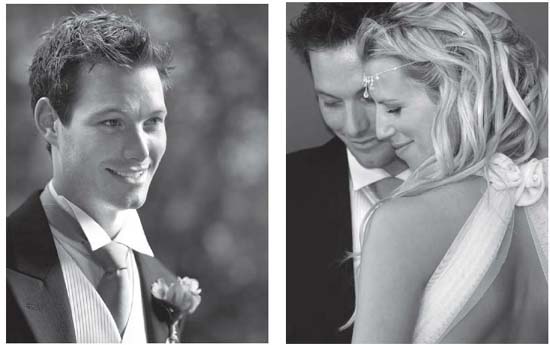
FIGS 25-29 All pictures are at f/4
A good repertoire of poses and shots that work to convey different moods and emotions is vital to be able to capture the spirit of the day. There is no eye contact with the camera in any of these pictures.

An old moss-covered tree was perfect as a location prop for this bridal portrait. It’s the kind of spot that is easy to dismiss at a venue.
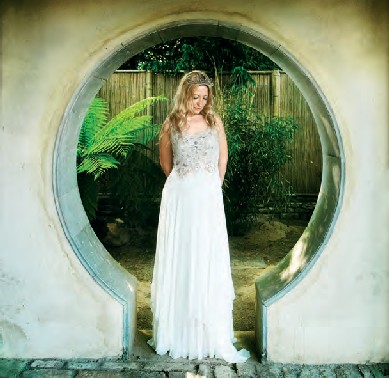
Fig. 31 ISO 400 f/5.6 at 1/45th
This keyhole gate at Matara in Gloucestershire sets a calm mood for the picture. I asked the bride to glance down and place her hands together behind her back for a simple elegant pose.
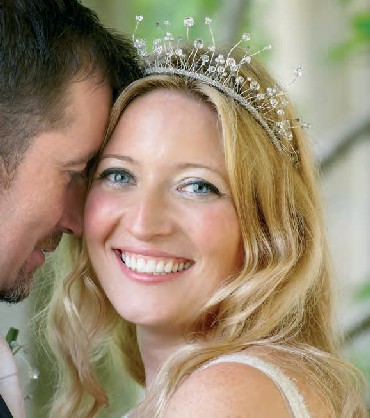
This bride is radiant. Go in tight when the moment is right and you will be rewarded.

Fig. 33 ISO 200 f/8 at 1/250th
My monopod was used to great effect again for this aerial shot of the groom showing the zigzag decking.
Typical strengths could include:
-
Dedicated and determined to succeed
-
Positive mental attitude
-
Enough start-up capital to get the business going
-
Great product and service
-
Good studio location with passing trade
-
Good health.
Typical weaknesses could include:
-
No real unique selling points
-
Not enough hours in the day to develop the business
-
Lack of brand credibility and experience
-
Lack of suitable tools to do the job efficiently
-
Not enough cash flow to sustain growth
-
Tired display products holding back the product value
-
Partial color blindness means reliant on outsourced picture editing.
Typical opportunities could include:
-
Establish a good rapport with the coordinators at local wedding venues
-
Make a parents’ album sample to encourage further after-sales
-
Submit the best weddings to date to magazines for free editorial coverage
-
Enter competitions and other PR-friendly activities
-
Get trained in craft skills to maximize picture quality
-
Hire a professional graphic designer and a copywriter to revamp the website
-
Create a database to handle client and job information more efficiently.
Typical threats could include:
-
Uncle Harry with his new Digital SLR camera at weddings
-
Local competitors at a low price-point with good products
-
A possible downturn in the economy
-
Ill health through sickness or accident
-
Lack of financial mastery.

Fig. 34 ISO 400 f/3.4 at 1/100th
The bride is looking at her groom in this setup. Triggering a natural emotion is key to the success of this kind of picture. The moment will be remembered as being fun and the picture will have more value as a result.
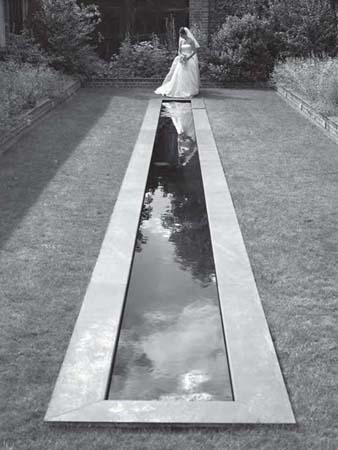
Fig. 35 ISO 400 f/9 at 1/750th
Mad architecture and design create instant opportunities for a picture.

I always try to include the sweep of the stairs in my compositions. I take extra care not to drop the camera in these situations.
Once you have completed your S.W.O.T analysis, you can list your priority actions and start to plan your diary to put in place your strategy for success. There is one other piece of information I need to share with you. If like me you are always busy, you may be asking how can I possibly fit more tasks into my workload? Managing your time well will free up the necessary opportunities and resources you need to be able to take action. Action is like a powerful drug and speaks louder than words. So make things happen and act sooner rather than later!
TIME MANAGEMENT
As I go through life, certain people have the most incredible effect on the way I think and do things and they don’t even know it. Stephen R Covey is one of them. In his book The Seven Habits of Highly Effective People he dedicates a chapter to time management. This really made me rethink my life and I personally recommend you get the book. I downloaded my copy from iTunes and I play it in the car from time to time. I’ll leave you to discover Stephen’s simple system of sorting your tasks.
Meanwhile, here are my own thoughts to get you thinking creatively about time management. Time is worth more than money. When you’re running a business, time is your most precious resource. Many people will tell you that time is money but it is far more valuable than that. You can usually sell some equity, get a loan, or use one of the numerous other ways to get some money but you can’t create time. There are short-term answers to the not enough hours in the day problem. You can spend less time with your family and friends, or you can sleep less and work until 2:00 am 7 days a week for a short time. But these are not long-term solutions. To run a small business well, you need to make the most of the time you have available to you.
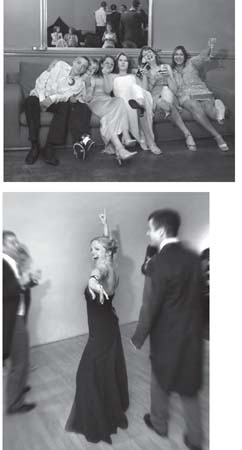
Figs 37–40 All pictures are at f/4 with off camera flash.
All party pictures I take get the TTL flash off the camera treatment. I will create moments and interact with wedding guests to get the best pictures. Rarely does a reportage approach yield as many saleable results as this method of engaging the revelers.
Steal an hour to create a list of all the tasks you undertake as part of your business and all the activities that make up your leisure time. Put these in column A on a spreadsheet. Over a period of a week or so, log a time for each activity and task as it happens in adjacent columns. Straightway you will begin to see areas where economies can be made. If you keep up the time logging for a month or so, you’ll get a more accurate appraisal.
Now act on the information you have discovered. For instance, you may have spent 8 hours doing bookkeeping during the month and you might be able to outsource that task to a local bookkeeper who will come in for one morning each fortnight (and as a bonus, they may well do a better job than you!). Youmay have spent 12 hours browsing forums. That’s a task with very little benefit to your business and if you stopped using the forum altogether, your business probably wouldn’t suffer. You have to identify the tasks that are important to the continued success of your business and those that are urgent. Redesigning your website maybe important for your continued success but it is not urgent. By not urgent, I mean if it’s not done this month, it won’t matter too much. An urgent task is one that has to be done now or at a specific time at whatever cost. Photographing a client’s wedding is one such task. Dealing with a customer complaint is another. If a task is not important to your continued success then consider dropping it altogether or delegate it. Holidays and family time are important and non-urgent activities, so too are product design, website design, personal training, and business planning. These are the tasks you should do more of at the expense of the non-important tasks.
Plan your activities at the start of each day. It’s easy to be deflected from the tasks you initially set out to do. Common distractions for most of us are the phone ringing and a constant stream of emails. Any unfinished tasks at the end of the day should be at the top of the next day’s list. Focus on the tasks that are most important rather the trivia. Give yourself a good number of short-term goals. Set timeframes for the completion of tasks. For instance you might set yourself 1 hour to update and revamp a webpage. With a specific timeframe you’ll be far more focused on completing it in that time. If you don’t give yourself that deadline it can drag on for hours. Of course, you need to learn to give yourself a realistic amount of time for each task in the first place. At just one page a day, by the end of the month your overhauled website will have become a reality.
Finally, when you’re trying to maximize the effectiveness of your time you must be aware of the heavy price of perfection. Striving for perfection is a commendable aim, but when you’re running a small business, perfection is often unrealistic and ultimately damaging. It makes more sense to consistently aim high than to try and achieve perfection every time. The time you spend on progressing a task from ‘high quality’ to ‘perfect’ is rarely time well spent. The return you get for investing your most valuable resource in making such a small gain is just not worth it. Once it’s good enough, stop and move on to the next job on your plan. It will be time better spent.
Further reading to help bring out the entrepreneur in you is The E Myth by Michael Gerber and if you want to get thinking on another level after just 90 minutes then get a copy of ‘The Secret’ on DVD from www.thesecret.tv

